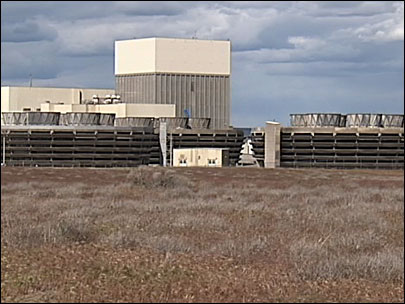forum
library
tutorial
contact

Is Our Nuclear Plant Safe? Yes
by Ann CongdonWenatchee World, May 10, 2011
|
the film forum library tutorial contact |

|
Is Our Nuclear Plant Safe? Yes
by Ann CongdonWenatchee World, May 10, 2011 |
 "A nuclear accident anywhere is a nuclear accident everywhere." I first heard this comment at an Institute of Nuclear Operations conference in Atlanta, Ga. This was before the crisis in Japan. I remember being puzzled by the comment at the time but now I get it. Japan's nuclear crisis will almost certainly impact the nuclear power industry globally, for decades.
"A nuclear accident anywhere is a nuclear accident everywhere." I first heard this comment at an Institute of Nuclear Operations conference in Atlanta, Ga. This was before the crisis in Japan. I remember being puzzled by the comment at the time but now I get it. Japan's nuclear crisis will almost certainly impact the nuclear power industry globally, for decades.
The earthquake and tsunami that struck Japan on March 10 were unprecedented in their ferocity. Thousands are dead, many thousands more are missing. Our thoughts and prayers are with those who now comfort the injured and shelter the homeless as that nation begins a long, painful recovery.
Much of the international focus was on the Fukushima Dai-ichi nuclear power reactors. Though the plants were able to survive a 9.0 magnitude earthquake, and operators safely shut down the reactors, the resulting tsunami took away the plant operators' ability to deliver water to the core, which led to the immensely challenging situation they are still facing.
In the past weeks, there has been much misinformation about nuclear energy which is playing on people's fears. The anti-nuclear lobby saw it as an opportunity, and they are exploiting it.
The comparisons that come to mind for most people are Three Mile Island and Chernobyl. This is understandable. However, Chernobyl was a weapons-grade reactor with no containment structure. The partial meltdown at the Three Mile Island reactor in Pennsylvania in 1979 actually demonstrated that the plant's safety systems worked, but, nevertheless served as a wake-up call to the industry to constantly examine and monitor safety.
A strong safety culture was developed in the United States following the Three Mile Island accident. Along with the Nuclear Regulatory Commission, the industry itself developed an intensive peer-review organization focused on operational excellence.
All nuclear reactors, including Columbia Generating Station, have redundancies built in including but not limited to multiple systems for core cooling. U.S. reactors have more equipment in place than those at Fukushima to cope in a situation where there is a total loss of power.
Columbia's multiple back-up systems include three emergency diesel generators, a battery system, a portable diesel generator for recharging the battery system and a manually operated, steam-driven pump to provide water to the core during a reactor shutdown if electrical power is not available. Energy Northwest also owns a fire truck which can pump water into the reactor core and used fuel pool through installed fire hose connections.
The nation's 104 nuclear power plants are able to withstand all forms of natural and man-made disasters, including major volcanic, seismic and flood activity. Columbia is designed to withstand a quake in excess of magnitude 7.0. It is sited far enough from the Columbia River -- three miles -- to avoid any potential flood scenario, including a breach of the Grand Coulee Dam.
In addition, employees at Columbia and other U.S. plants undergo rigorous, ongoing training related to safety and operations. Along with robust emergency response training and drills, reactor operators train one week out of every six to demonstrate proficiency in their primary responsibilities, and must pass an exam annually to maintain their licenses.
Once the situation at Fukushima is stabilized, there will be an intense reconstruction of what happened in the hours and days after the tsunami struck to find out what could have been done differently. The culture of the nuclear industry is one of "safety first." Columbia is committed to incorporating lessons-learned as they emerge. They have already joined a nationwide effort to re-examine procedures and equipment used to respond to natural events, total loss of power and significant loss of critical systems.
Mark Reddemann, CEO of Energy Northwest, said: "What you should know is that every employee who works at Columbia Generating Station has an unwavering dedication to safety. Ask any member of the team, 'Who is responsible for nuclear safety?' and the answer will be, 'I am.' Whatever happens in the aftermath of Fukushima, those two words will not change."
Note: Chelan PUD is a member of Energy Northwest, a joint operating agency, comprising 28 member public utilities from across the state of Washington. The agency owns and operates four electricity generating stations, including the Columbia Generating Station nuclear power plant. The other generating facilities include the Packwood hydro plant, Nine Canyons wind farm and White Bluffs Solar Facility. Chelan PUD is a purchaser of the ENW Nine Canyons wind farm.
Related Sites:
Chernobyl: A Million Casualties EnviroVideo Karl Grossman interviews Janette Sherman, M.D., toxicologist.
learn more on topics covered in the film
see the video
read the script
learn the songs
discussion forum
